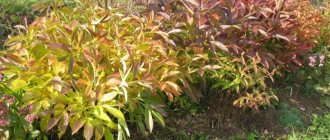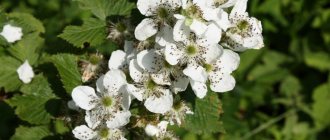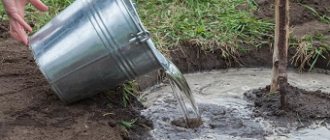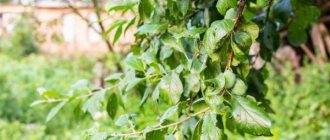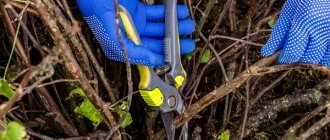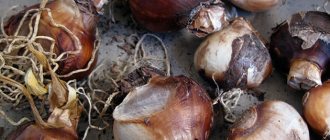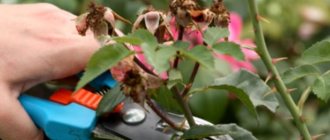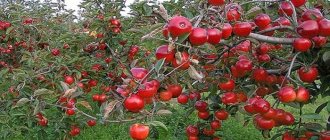When summer comes to an end, a busy time begins for flower growers. This is especially true for connoisseurs of the most beautiful flowers in the world - roses. In order for these graceful beauties to delight you with their blooms next year, you need to care for your roses in the fall. Preparing for winter is a complex process, and experienced gardeners know very well that roses need feeding, pruning, and covering the plant.
We will talk about this in detail and hope that the information received will be useful to those who have just started growing these magnificent plants on their site.
What happens to roses in autumn?
Today, a huge number of varieties of roses have been bred. They differ in appearance and have developmental features, but the processes occurring in them in the autumn are similar. Therefore, it is important to understand what care is required for roses in the fall. Preparation for winter is based on the processes that occur in the life of flowers during this period:
- Stem growth and bud development slow down. If the autumn is warm, these processes may continue. But this does not mean that preparation for winter can be postponed. It is also not worthwhile to intensively apply autumn fertilizers for roses during this period in the hope of active flowering. With proper care, the crop received all the necessary nutrients in summer and spring.
- The stem begins to become woody. The new bark can protect the shoots from the cold.
- The root of the bush is fixed in the soil and accumulates useful substances for storage until spring. Therefore, transplanting roses in the fall, as a rule, gives positive results.
- Metabolic processes in the plant slow down.
Nature itself begins to prepare roses for winter. But usually this is not enough: these plants are heat-loving, and gardeners should take care of their shelter for the winter. Activities aimed at preparing roses for winter are best divided into several stages, which are carried out monthly. In this matter there cannot be exact terms, much less dates, since such a division is quite arbitrary. For example, in the northern regions, cold weather begins early, for this reason some types of preparatory activities are delayed by almost a month. It is more advisable to focus on the weather and climatic conditions of the region.
Useful tips from flower growers
Those who have been growing roses for several years now willingly share recommendations with novice gardeners. It is recommended to choose the fertilizing technique taking into account the weather forecast. If it rains in the fall, it is useless to water and spray the roses. It is better to make grooves at a distance of 15 cm from the stem and fill them with a mixture of soil and dry fertilizers, so that after watering or rain the plant receives all the necessary substances.
It is more convenient to dilute phosphorus-containing rose fertilizers in the fall in a small amount of warm water, and then bring them to the required volume according to the instructions. The reason for this approach is the poor solubility of many fertilizers with phosphorus.
Taking into account the listed nuances of caring for roses in the garden, you can adjust the care of flowers, provide them with protection and nutrition before the onset of frost and lay the foundation for future abundant flowering.
Caring for roses in September
During this period, the trunks are painted, weeded, and the rose garden is dried. When preparing roses for winter, pay attention to the condition of the soil. It must be completely clean. Therefore, you should get rid of all weeds and annuals that grow near the bushes. Remove the lower leaves to a height of about twenty centimeters. This will greatly simplify hilling.
In September, we recommend painting the trunks of roses. Thanks to this procedure, pathogens will not harm the plant. To do this, you can use special garden paint or water-based emulsion diluted with copper chloride. You need to start painting from the bottom and finish at the hilling level (about thirty centimeters). Feel free to paint the trunks if you find any damage to the integrity of the bark. When the trunk dries, the bush needs to be spudded.
If flowering has not stopped in September, remove small and wilted buds, which still will not bloom before the onset of cold weather.
How to properly feed roses in the fall
Basic recommendations for proper fertilization of roses:
- Before applying fertilizer, you need to make a circular depression along the diameter of the bush (or better even a little more, at least retreating by 15-20 centimeters), so to speak, a groove (hole).
- Before feeding roses, you should first water the bushes with plain water , because... It is always recommended to fertilize in damp soil, especially with mineral fertilizers.
By the way! You can water the day or 1-2 hours before applying liquid fertilizer.
- It is advisable to fertilize in the morning or evening , but not at noon, when the sun is at its zenith.
- As for the method of applying fertilizer, in the fall , as a rule, root fertilizing is carried out (at the same time, dry fertilizing is convenient if the autumn is rainy, otherwise it will be much more effective to make a solution and apply liquid fertilizing). But foliar feeding (spraying on leaves) is usually carried out in the summer.
Important! It is believed that foliar feeding is especially effective when the plant is in dire need of certain microelements, for example, in the case of chlorosis.
Worth understanding! Foliar feeding cannot completely replace root feeding.
- As for the dosages and timing of use of certain fertilizers, always rely on the instructions on the packages and do not rely on memory.
Video: how to feed roses in September
We continue preparations in October
So, in October, the preparation of the royal flowers for winter continues. Pruning in the fall is very important for roses because it makes it easier to cover the plants. First of all, tall bushes (standard and tea varieties) should be shortened. Otherwise, the two-meter beauties will die. The bushes are pruned and potassium fertilizers are applied to them. The height of the bushes should be halved. Plants with large flowers are shortened by a third. Small-flowered plants are not pruned at all. For them, pinching the growth point is enough.
Many gardeners choose the time for pruning according to the Lunar calendar. Plants are pruned during the waning moon.
How to fertilize roses in the fall: options for effective fertilizing
There are many options for fertilizing roses. Of course, it is always optimal to combine mineral (preferably complex) and organic fertilizers.
Important! All types of roses can and should be fed: ground cover, Floribunda, climbing (climbing), hybrid tea and others.
Let's look at the main fertilizers for autumn feeding of roses:
You need to either prepare a solution from a combination of one potash and one phosphorus fertilizer, or purchase a complex fertilizer.
Phosphorus fertilizers
- Superphosphate - nitrogen 6-9%, phosphorus - 26-30% (10-20 grams per 10 liters of water or per 1 sq.m.).
Advice! Read more about the use of superphosphate in this article .
- Ammophos - 52% phosphorus and 12% nitrogen (15-20 grams per 1 square meter or dissolve in a bucket of water and pour).
Potash fertilizers
- Potassium sulfate (potassium sulfate) - 46-52% potassium (10-20 grams per 10 liters of water or per 1 sq.m.).
By the way! Instead of potassium sulfate (potassium sulfate), you can use potassium salt .
It is also very convenient to use potassium magnesia , which, in addition to potassium, includes such an important microelement for rose flowering as magnesium.
Complex potassium-phosphorus fertilizers
- Potassium monophosphate - 50% phosphorus and 33% potassium (10-20 grams per 10 liters or 1 sq.m.).
Potassium monophosphate is the most effective phosphorus-potassium fertilizer, because it dissolves very easily in water and is quickly absorbed by all plants. But it is quite expensive...
- Diammofoska - 10% nitrogen, 26% phosphorus and potassium each (20 grams per 10 liters of water).
Initially, it is better to dissolve Diammofoska in hot water (40-50 degrees).
- You can also find special fertilizers on sale labeled “autumn” or simply “phosphorus-potassium.”
Organic potassium-phosphorus fertilizers
And if you are a supporter of organic farming
(although feeding flowers with mineral fertilizers is not the same as edible crops), you can
use wood ash as a potassium fertilizer by preparing the following solution (or even better, an infusion extract): 100-200 grams per 10 liters of water.
As for phosphorus , it is available in the same bone or fish meal (sprinkle 100-200 grams per 1 sq.m. of beds).
By the way! In addition to phosphorus (up to 30%), bone meal contains a lot of calcium (up to 45%).
A kind of “folk fertilizer” for roses are:
- yeast infusion;
- banana peel (contains potassium; you just need to scatter it around the tree trunk, but it’s better to dig it up);
- eggshells (contains calcium).
However, their effectiveness in the autumn is not very high.
Ready-made fertilizers for roses
If you don’t want to bother (you are a “lazy” summer resident), then you can buy one of the special complex fertilizers for roses , which already contains all the macro- and microelements. For example (use everything according to the instructions on the packages):
- Fertilizer “Kristalon” for roses (liquid);
- Fertika "Garden and Vegetable Garden" for roses (organic-mineral dry mixture, more powerful and with humate);
- Particularly popular are special long-acting fertilizers (granulated, preferably applied dry into holes along the diameter of the bushes, and then watered). For example, " Gloria " by Fusco.
- Or " Roses " from Pokon (Pokon).
Disease Prevention
In October, it is necessary to take care to prevent diseases of roses. To do this, the following procedures are required:
- Spraying. Experienced gardeners know that parasites can withstand even very low temperatures. Therefore, it is necessary to protect your favorite flowers from diseases during the winter. A 1% solution of Bordeaux mixture is suitable for this.
- Clearing the area of debris. The area where the bushes grow should be completely cleared of debris and fallen leaves. If you have a compost pit on your property, transfer all the branches and leaves into it or burn the garbage. This will prevent the development of diseases and the appearance of pests.
The role of fertilizing
The composition of autumn fertilizing and the timing of its application should maximally ensure the readiness of rose bushes for the cold period and successful wintering with minimal losses.
What do fertilizing influence:
- increase endurance and resistance to low temperatures;
- ensure the presence in the soil of components necessary for nutrition - minerals and organic matter, which are consumed in large quantities during flowering;
- strengthen the root system and stems;
- help to recover faster after autumn pruning;
- help improve immunity, which, in turn, increases resistance to diseases and pests.
Autumn for plants is preparation for the onset of the dormant period. If you apply fertilizers with a large amount of nitrogen at this time, they will provoke unnecessary growth of green mass and young shoots that may not tolerate the cold.
Fertilizers containing nitrogen, magnesium, iron, copper (for example, Agricola) are necessary in the summer, but in the fall they disrupt the biological cycle of the plant. In the pre-winter period, emphasis should be placed on phosphorus-potassium fertilizers.
Important! The complete exclusion of nitrogen in autumn fertilizing of roses leads to poor absorption of phosphorus, so nitrogen should be present in fertilizers, but in minimal quantities - about 5%, no more. When choosing a fertilizer, you should pay attention to the labeling - “autumn”.
Necessary components of fertilizers for roses in the autumn:
| Item name | What does it affect? | What fertilizers does it contain? | Action |
| Potassium (K) | Helps lower the freezing point of cellular fluid | Potassium sulfate, potassium sulfate, potassium magnesium | Increased resistance to low temperatures, strengthened immunity, increased resistance to pests |
| Calcium (Ca) | Necessary for strengthening the root system | Fluff (slaked lime), dolomite flour, chalk, wood ash | Improves winter-hardy qualities |
| Phosphorus (P) | Promotes rapid maturation of shoot wood | Superphosphate (single and double) | Improves general condition, resistance to weather fluctuations and other stressful situations |
Preparing to insulate roses
A correctly carried out sheltering procedure stimulates active growth and flowering of the crop in the spring, and also helps to keep the plant alive. But an ill-organized shelter can destroy these fragile and delicate beauties. This procedure consists of several stages:
- Cleaning leaves. All leaves are removed from the plant. This guarantees plant protection from fungal diseases. Digging up the soil For this purpose, you need to use a pitchfork: this way you do not injure the roots of the plants. If the plant has long shoots, they need to be dug up on one side.
- Hilling. Dry materials are suitable for this: loose soil, peat, sand. Having poured earth under the root, it is necessary to create a mound about twenty centimeters high. This procedure will protect the kidneys from death even in severe frosts.
Mineral fertilizers
After prolonged flowering, rose bushes are weakened and need to be restored, so before wintering it is recommended to fertilize them well with minerals that will help the plants survive the winter better and give them strength for active growth in the spring.
Mineral fertilizers are applied twice - in September and October. The main requirement for such autumn fertilizing is a high content of potassium and phosphorus.
Potash
Potassium magnesium (contains potassium, sulfur and magnesium) can be used as a source of potassium. Feeding roses with this fertilizer strengthens plant stems, increases the number of buds and protects them from fungal infections.
The rules for using potassium magnesia to feed roses are listed below:
- At the end of September, you can prepare a basic solution for spraying bushes - for this, 20 g of the substance is dissolved in 10 liters of water. To irrigate roses on an area of 1 m², 5 liters of the resulting solution is sufficient.
- It is recommended to apply the second feeding in dry form - to do this, dig a small groove around the bush at a distance of about 20 cm, into which potassium magnesia powder is added. The fertilizer consumption rate per 1 m² is 20 g.
Important! Excess potassium in the soil leads to roses blooming later than expected, and some buds remain underdeveloped and rot, so you need to strictly follow the instructions for using fertilizers.
Phosphorus-potassium
This group of fertilizers is very important for bushes, as it helps them successfully survive exposure to low temperatures and long wintering, increases the resistance of roses to diseases and helps strengthen the trunk.
Phosphorus-potassium fertilizer options are listed below:
- To water plants, you can prepare a mixture by dissolving 15 g of potassium monophosphate and superphosphate in 10 liters of water. The specified amount of solution is enough to treat an area of 5 m².
- To stimulate rapid lignification of the stem, you can use a phosphorus concentrate prepared from 50 g of superphosphate and 1 liter of hot water (temperature +65°C). The resulting product is diluted with clean water in a ratio of 1:10 and used for spraying bushes.
- To prepare a nutritious root dressing, you can mix 10 g of potassium sulfate, 25 g of superphosphate and 2.5 g of boric acid, and then dissolve them in 10 liters of water. To water one bush, it is recommended to use 1 liter of fertilizer.
- In October, it is better to give preference to dry potassium-phosphorus fertilizers - dig a small trench around each bush and place 30 g of potassium sulfate and 40 g of superphosphate granules in it. Then a little water is poured into the trench and sprinkled with soil so that the introduced substances are well dissolved in the soil.
Nitrogen
It is not recommended to apply nitrogen fertilizers to rose bushes in the fall.
They cause continuous growth of green mass, as a result of which the bush cannot go into a winter dormancy state for a long time and wastes energy in vain on growing leaves.
Did you know? The rose is the national flower of the USA, Iran and England.
Shelter of roses
All shoots should be collected and spread on the ground. After this, they need to be covered with a layer of at least ten centimeters. You can use thicker insulation, it is important that it does not harm the plant, which may suffocate or break. The covering material can be spruce branches, dry grass, burlap, brushwood. During the frosty winter, special shelters will be needed. It is necessary to build a frame around the bushes, which is insulated with polyethylene or cardboard. In November, roses are insulated with snow. Bushes covered in this way, even very fragile ones, will survive the cold well.
When to cover roses for the winter
You need to cover your roses before it gets cold. Depending on the region, this is the end of September - mid, end of October.
Shelter is the most important stage in preparing a plant for winter. If you make a mistake here, the bush simply will not survive the winter.
The best option to cover the bushes is to make an air-thermal structure: agrofibre on a rigid frame made of boards. Such a shelter will prevent the plant from freezing and, at the same time, ensure normal air circulation, and the rose will not rot.
IMPORTANT! The film does not allow the bush to breathe, so damping off may begin.
You can also cover roses in the fall with spruce branches, straw, burlap and halves of plastic bottles with holes for ventilation.
Why fertilize in the fall?
Summer flowering of roses requires a huge consumption of nutrients from the plant. When it is completed, the bushes need to restore the disturbed balance. Therefore, autumn fertilizer for roses is necessary - this is a mandatory event that must be planned in advance.
Experts recommend feeding bushes twice in the fall. The first is at the end of August or early September, when flowering ends. The second is at the very end of September or early October. With the onset of winter, the growth of rose bushes stops, but as soon as the temperature rises slightly above zero, which often happens in the middle zone and in the south, the plant “comes to life” and sap flow resumes. During frosts, the sap freezes, the bark expands and may crack. Pathogenic bacteria grow in cracks.
In addition to autumn pruning, garbage collection, and shelter from the cold, autumn care for beautiful roses also involves properly fertilizing.
When is the best time to feed roses in the fall: optimal timing
In order for fertilizers to benefit the flower crop, they must be applied at the appropriate time. When is it better to feed roses in the fall for lush flowering next year in the summer, in what month?
Feeding garden roses in autumn can be divided into 2 stages:
- the timing of the first application of fertilizers is at the end of August - beginning of September (after flowering);
- The second and last time during the season you need to feed in the fall at the end of September-beginning of October.
Autumn procedures must be carried out before cold weather, otherwise the soil will cool down and nutrients will be less absorbed.
When to apply autumn fertilizers for roses?
August is the month in which the last autumn fertilizers for roses are applied before the onset of cold weather. The soil is fertilized with phosphorus. In addition, potassium fertilizers are applied. In autumn, these chemical elements make plants more resistant to diseases, stimulate the maturation of wood in young plants and flowering of the crop.
What other fertilizers are applied to roses in the fall? Some gardeners use a rather specific type of fertilizing. They bury banana skins in the soil under the bushes, which contain a lot of potassium, which is very useful for these plants.
And manure should not be used as fertilizer. This organic matter is summer feeding. A rose fed with manure in the fall produces young stems that only interfere with the crop.
The second feeding is carried out at the end of September. For climbing species and bushes, the best fertilizer for roses in the fall will be:
- potassium (potassium magnesium, potassium sulfate, potassium sulfate, potassium chloride);
- phosphorus (double superphosphate and simple superphosphate);
- calcium (wood ash, chalk, dolomite flour).
At the end of September, it is necessary to use potassium autumn fertilizers for roses. To do this, you need to prepare a special solution: fifteen grams of potassium superphosphate and sixteen grams of potassium monophosphate are diluted in ten liters of water.
You can prepare phosphate fertilizers for roses in the fall in the following proportion: 10 liters of water + 10 grams of magnesium sulfate. Or you need to dissolve superphosphate (50 grams) in a liter of hot water. Dissolve the resulting infusion in ten liters of water and spray the plant.
Calcium supplementation is obtained by dissolving a tablespoon of calcium nitrate in ten liters of water. In October, it is necessary to add organic fertilizers to the soil, for example, rotted compost. Feeding is stopped in November so as not to provoke rapid growth of shoots.
How to fertilize roses in the fall
To feed roses with fertilizers in the fall, a very wide range of useful mixtures and substances is used - both mineral and organic. But they should not be used at random, but only with a clear understanding of why this or that feeding is needed.
Organic fertilizers
The advantages of organic fertilizers are that with each of them roses receive a whole range of useful substances. In addition, the effect of fertilizing turns out to be extended over time - valuable substances continue to nourish the plant until spring.
Ash
Wood ash is a very popular fertilizer among rose bush fans. It contains primarily potassium and calcium, and both of these elements are extremely important for roses on the eve of winter.
As a rule, ash is applied under the roots of the rose bush. It can be diluted in water in the amount of 100 g per 10 liters of liquid, or you can simply scatter dry ash on the ground - about a three-liter jar of fertilizer will be needed per square meter.
Compost
Compost is an organic mixture of fallen leaves, weeds and tops obtained as a result of overheating. This mixture contains almost all the substances that roses need in the fall - potassium and phosphorus, a small amount of nitrogen and other elements. Compost is scattered near the roots of the plant in an amount of several kilograms per square meter.
An important advantage of organic fertilizer is that compost additionally acts as a heat-insulating layer and protects the roots of the bushes from hypothermia. Therefore, it is better to apply it in late autumn, just before the onset of cold weather.
Onion peel
A non-standard, but very useful fertilizer for roses is ordinary onion peel. It contains a rich vitamin complex that roses need in autumn - vitamins C and B, carotene, phytoncides. The husk not only strengthens the plants, but also helps in the fight against insect pests.
Most often, the husk is used in liquid form. For example, you can cook:
- decoction - onion skins are tightly packed into two glasses, the measured amount is poured into 10 liters of water, boiled and then left for another 4 hours;
- infusion - 0.5 kg of husk is poured into 2 liters of warm water and infused under a lid for 24 hours.
Fertilizer can be poured under the root of the rose bush, or you can spray it on the leaves of the plant if fertilizing is carried out before leaf fall.
In addition, onion peels are often added to compost to create an improved mulching mixture that can be used before the onset of winter.
Manure
Fresh manure is an excellent classic fertilizer containing a full range of macro- and microelements - nitrogen and potassium, phosphorus, iron and manganese, magnesium and boron. In order for it to bring maximum benefit to rose bushes, it is first subjected to overheating - that is, it is put into storage and waited until it turns into humus.
Rotted manure is usually used in early autumn, fertilizing the soil under the roses with several kilograms of fertilizer per square meter. Manure plays an additional role as mulch and protects the roots of the plant from frost.
Bird droppings
Bird droppings are a high nitrogen fertilizer. This means that it is undesirable to use it in the fall, at least in high doses. Nitrogen fertilizer can provoke the rose to actively grow, while in the fall it, on the contrary, needs to go into a state of rest.
If the plant is still severely lacking in nitrogen, and you need to feed the rose in the fall, then it is better to use bird droppings in early September - and in small quantities. Then the nitrogenous compounds will have time to be absorbed by the plant, and the transition to a state of winter dormancy will proceed normally.
Eggshell
Egg shells contain a lot of calcium, which is beneficial for rose bushes. This fertilizing loosens the soil and improves its structure, promotes better root ventilation, and reduces soil acidity.
Fresh shells are used both dry and as an infusion.
- In the first case, you just need to dry the shells, then crush them into small crumbs and sprinkle the soil around the rose bushes - in a volume of 1 - 2 cups per square meter.
- In the second case, the shells of 4 eggs are poured with a liter of boiling water, and then left for 5 days, stirring daily. The resulting solution is poured under the root of the rose.
Mineral fertilizers
Both at the beginning and at the end of autumn, special mineral supplements can be used to feed roses. Their effect is faster and more concentrated. Such fertilizers are especially good for combating specific problems - for example, for restoring a plant after an illness, or for purposefully enriching the soil with some substance.
Potash fertilizers for roses in autumn
Feeding with potassium is one of the most important for roses in the fall. Potassium primarily helps to increase the plant's frost resistance, strengthens the bushes' immunity to diseases and pests, enriches the soil and guarantees a large number of buds for the next year.
The following potassium preparations are mainly used for feeding.
- Potassium sulfate is one of the best potassium fertilizers for autumn. It has a strengthening effect, but does not contain chlorine, so it can be used directly in preparation for winter.
- Potassium magnesia. The additive contains 30% potassium and 10% magnesium oxide. Well suited for fertilizing in the fall, especially successfully enriches light sandy soils.
There are other drugs - potassium chloride, potassium nitrate. However, it is better to use them in the spring or on soils where roses are only planned to be planted.
Phosphorus-potassium fertilizers for roses in autumn
Another extremely useful fertilizing in the fall is done using phosphorus-potassium fertilizers. If potassium is responsible for increasing cold resistance, then phosphorus promotes the absorption of amino acids and sugars by rose bushes, and also strengthens the roots before the coming winter.
The most popular phosphorus-potassium fertilizer is simple or double superphosphate. Phosphate rock is also used for fertilizing - it is better to use it once every few years and only on slightly acidic soil.
Attention! When feeding roses in the fall with phosphorus-potassium fertilizers, it is important to follow the dosage specified by the manufacturer. On average, it is 40 - 60 g of fertilizer per square meter - granules can be embedded in the soil either dry or diluted in water.
Nitrogen
Most gardeners are keenly interested in the question of whether it is possible to use fertilizers such as urea or ammonium nitrate in the fall - in other words, nitrogen-based fertilizing.
Since nitrogen stimulates the vegetative processes of roses and promotes the rapid development of shoots and leaves, it is not recommended to use fertilizer in the fall. This is especially true for ammonium nitrate - the concentration of nitrogen in it is very high, and even if applied to the soil in early autumn, fertilizing will have a rather negative effect on roses.
It is better to use nitrogen-based mineral fertilizers in spring and summer, when roses are actively developing and it is necessary to stimulate their growth.
Features of autumn feeding
- In autumn, it is better to replace liquid fertilizers with granular ones, for example “Osennee”. Such fertilizing is not immediately, but gradually absorbed, providing nutrition and protection to the plant even under a layer of snow.
- Root feeding can be successfully replaced with foliar feeding, for example, spraying. In this case, the concentration of the starting substances is reduced by three times.
- Autumn fertilizers for roses are best used in dry form during the rainy season. This will protect the soil from rotting.
Many gardeners do not deny that roses cause a lot of trouble. But the amazing beauty and wonderful aroma of these beauties in the summer will convince you that your efforts were not in vain. If you carry out autumn rose care activities correctly, then in spring and summer your garden will be decorated with healthy and strong flowers.
Types of feeding roses
For proper nutrition of roses, gardeners use root and foliar feeding.
In the first case, nutritional components are added by watering or embedding directly into the soil, in the second, the plants are sprayed with special products from a spray bottle.
Foliar feeding of roses
The undoubted advantage of foliar feeding is that plants quickly receive the necessary nutrients, but the composition of the soil does not change. In order to feed roses in the fall, 50 g of superphosphate is dissolved in 1 liter of hot water, after which another 10 liters of water are added and the leaves of the plants are sprayed. You can also use potassium monophosphate (5 g) and superphosphate (5 g) dissolved in 10 liters of water.
Few plants love ash as much as roses. Therefore, in the fall it will be useful to spray your beauties with an ash solution. For foliar feeding, 200 g of ash is dissolved in 10 liters of water.
It is important to remember that spraying plants during the daytime, when the sun is especially active, can cause leaf burns. And spraying too late (after dusk) can provoke the development of fungus, since the moisture simply does not have time to evaporate.

